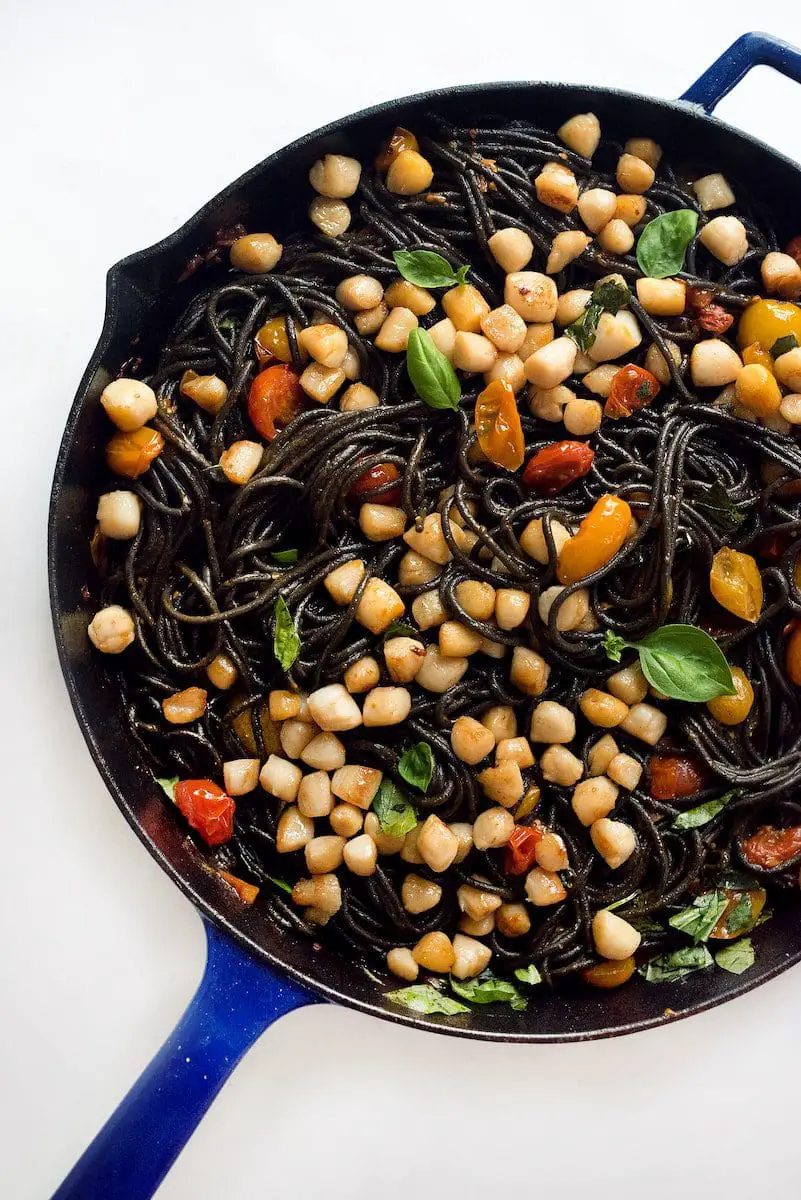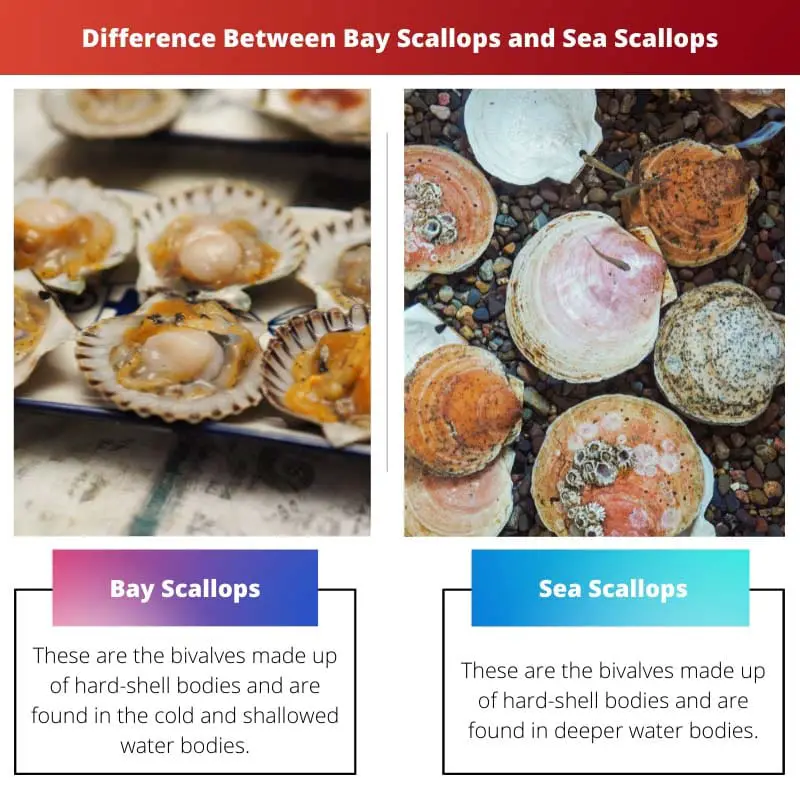The major area of the earth is not land. Rather, it is water, most of which is covered by many seas and other giant water bodies.
These water areas are home to many creatures, plant species, and other things as well. One such thing found in water bodies is scallops.
Looking like a small shell-like object, these scallops are of many types that are identical and similar to one another in many ways.
Scallops are primarily divided into two categories, namely Bay Scallops and Sea Scallops. While these two belong to the same family of aqua products, these can be differentiated in many aspects.
To know the like of seas in a better manner, it is crucial to mark a line of difference between the two.
Key Takeaways
- Bay scallops are smaller and sweeter than sea scallops.
- Bay scallops are harvested in shallow waters, while sea scallops are harvested in deeper waters.
- Bay scallops are more delicate and require less cooking time than sea scallops.
Bay Scallops vs Sea Scallops
The difference between Bay Scallops and Sea Scallops is that the former seems comparatively small than the latter. This exists as the most crucial difference known to many people. But this isn’t the only difference, and if looked at both of these carefully, many other differences can also be found upon which this article shall be shedding light.

Talking about the Bay Scallops, these are majorly found in the bays and other similar areas around the east coast mostly.
Their size happens to be smaller as compared to the other category of scallops, and in a pound of scallops, around 50 to 100 of these scallops are measured. Their flavour happens to be sweet, and they carry very soft flesh in them.
On the other hand, Sea Scallops are a prime variety of scallops and are found in almost all parts of the planet Earth. It can easily be inferred from their name that they are found in deep water only.
They weigh more than the bay scallops and are larger in size too. In most restaurants, if one orders scallops, he is most likely to get these only.
Comparison Table
| Parameters of Comparison | Bay Scallops | Sea Scallops |
|---|---|---|
| Meaning | These are the bivalves made up of hard-shell bodies and are found in the cold and shallowed water bodies. | These are the bivalves made up of hard-shell bodies and are found in deeper water bodies. |
| Found in | Usually in cold-water bodies found on the east coast. | Usually, in water, bodies having deepness all over the world. |
| Size | These are almost half inches wide in size. | These are almost two inches wide in size. |
| Taste | Sweet in taste | Chewier in taste |
| Weight | These are lighter in weight. | These are heavier in weight |
| Price | Comparatively cheap | Comparatively expensive |
| Ease of cooking | These carry tender meat and are easier to cook. | These are comparatively rough and take more time to get boiled or cooked. |
What are Bay Scallops?
Bay Scallops happen to be a category of scallops that are the shell-shaped structures found in water bodies. While these look like a stone, they are heavily used as a food option in many countries.
The Bay Scallops can be seen merged in the water surface of those water bodies that are cold and shallow in nature. These water bodies are commonly found in the east coast area.
These are around half inches in width and weigh less than other scallops. If one is to measure the weight of these scallops, in one pound, almost fifty to a hundred scallops can easily be kept without any discomfort.
They taste sweet and carry along very tender and soft meat in their muscles. This makes them easy to cook and boil. However, these scallops are not very easily found in many places due to their limited availability in water bodies.

What are Sea Scallops?
Sea Scallops, on the other hand, are the most premium and vastly available type of scallops. These can be found almost everywhere, from east to west and north and south.
This availability makes them quite popular among people who prefer using scallops in their meals.
As their name itself suggests, these are the shell-shaped things found in waters that are deep.
Mostly scuba divers are used to getting these scallops out of the water because they exist almost below 200 meters from the surface. But in some rare cases, they can be picked by hand as well.
They weigh more than other varieties, and in one pound, we can easily keep 20 to 30 scallops of this category. These are quite rough from outer areas and hence less likely to receive any damage.
But this hard work of picking these scallops from the bottom of the sea comes with a price, and that price is the expense of these scallops.

Main Differences Between Bay Scallops and Sea Scallops
- Bay Scallops are bivalves made up of hard-shell bodies and are found in cold and shallowed water bodies. While on the other side, Sea Scallops are bivalves made up of hard-shell bodies and are found in deeper water bodies.
- Sea Scallops are comparatively more expensive in price and more common in availability than Bay Scallops.
- Sea Scallops weigh heavier than Bay Scallops.
- In one pound, there can be 100 bay Scallops, while in one pound, there can be roughly 20-3- Sea Scallops.
- Bay Scallops are found in water bodies having bays and estuaries, while Sea Scallops are found in deep waters.
- While Bay Scallops are common on the east coast only, Sea Scallops can be noticed almost everywhere on the planet Earth.




